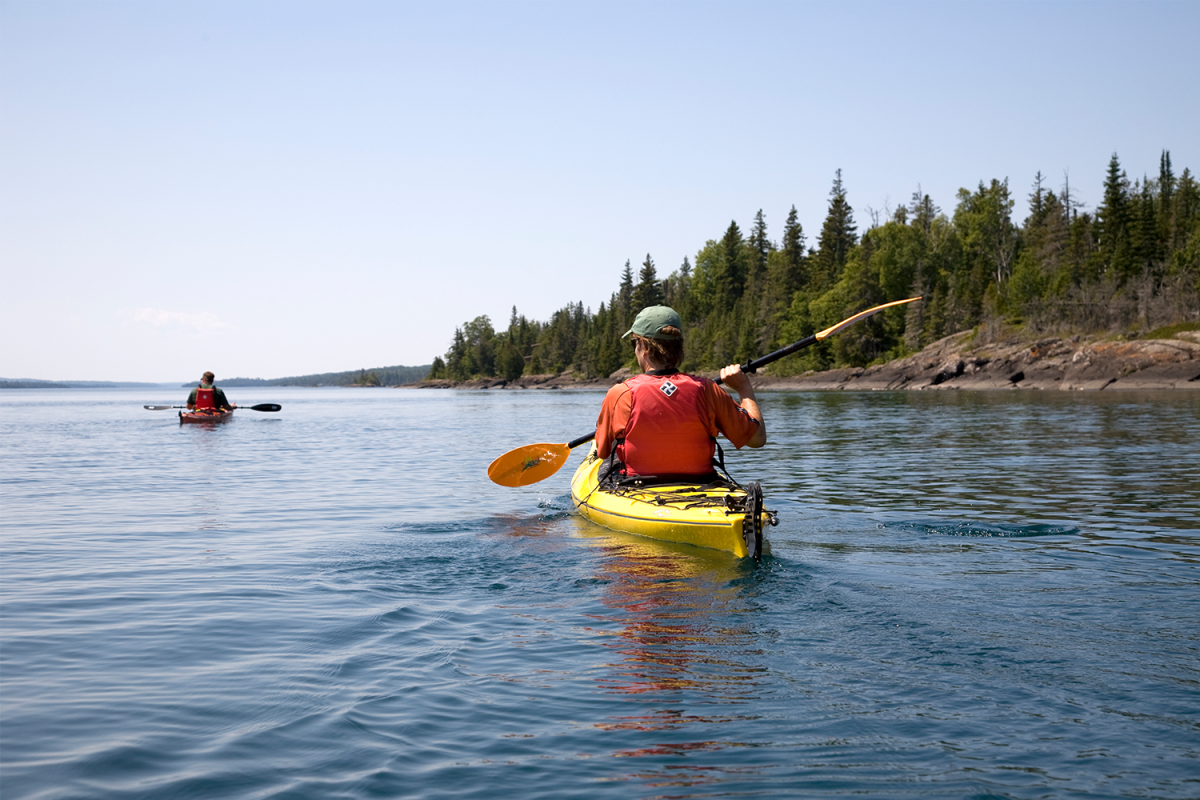Yellowstone, Zion, Yosemite. These are the places you think of when you hear the words “national park.” As some of the most famous examples, you’d also think these parks would be the first to make bold moves to fight climate change. Yet, while the National Park Service has been implementing mitigation practices for a while now, the first parks that plan to fully “decarbonize” are ones you may have never heard of.
On Saturday, the National Parks of Lake Superior Foundation (NPLSF) announced the “Decarbonize the Parks Project,” an initiative that sets out to “cut carbon pollution from parks facilities and pursue net-zero energy consumption” within four years from the five parks in Michigan, Minnesota and Wisconsin that lie on the shore of the Great Lake. By “[bringing these] parks completely off fossil fuels,” as Sheri McWhirter wrote at MLive.com, they hope to “provide a climate action blueprint for other national parks.”
The five parks are Apostle Islands National Lakeshore, Grand Portage National Monument, Isle Royale National Park, Keweenaw National Historical Park and Pictured Rocks National Lakeshore. All of these natural areas have their own challenges for eliminating fossil-fuel use, but Isle Royale, a main island and over 400 adjacent islands on Lake Superior, is a unique case. To put it bluntly, as Tom Irvine, executive director of NPLSF, did to MLive.com, it’s “probably the most difficult to reach wilderness area in the continental United States.”
But that quality is also what makes the park a prime target for eliminating fossil fuels.
“It’s kind of incongruous with the park and the missions and the experience that visitors want to have when they go to Isle Royale, to hear diesel generators roaring in the morning and in evenings,” he said. “It’s been a priority of the park for years to do something about that.”
The 21 Most Underrated, Crowd-Free National Parks in America
From North America’s largest coral reef to a voyage north of the Arctic CircleAs the NPLSF explains, decarbonizing will involve transitioning to clean energy (solar, geothermal and other renewable sources), boosting the energy efficiency of park facilities (windows, insulation, lighting, HVAC and appliances) and electrifying the parks’ transportation (light-duty land vehicles, though boats are being considered), among other things.
To achieve a 100% reduction in greenhouse gas emissions, the estimated cost is set at $15.3 million, with money coming from the National Park Service, as well as potentially the Inflation Reduction Act and Infrastructure Investment and Jobs Act, as well as private donations.
You can read the full report, which was commissioned with help from Askov Finlayson (which you know as the climate-positive outerwear brand), over at the NPLSF site here.
If these parks can do it, so can the other 419 areas in the National Park System.
Thanks for reading InsideHook. Sign up for our daily newsletter and be in the know.


















